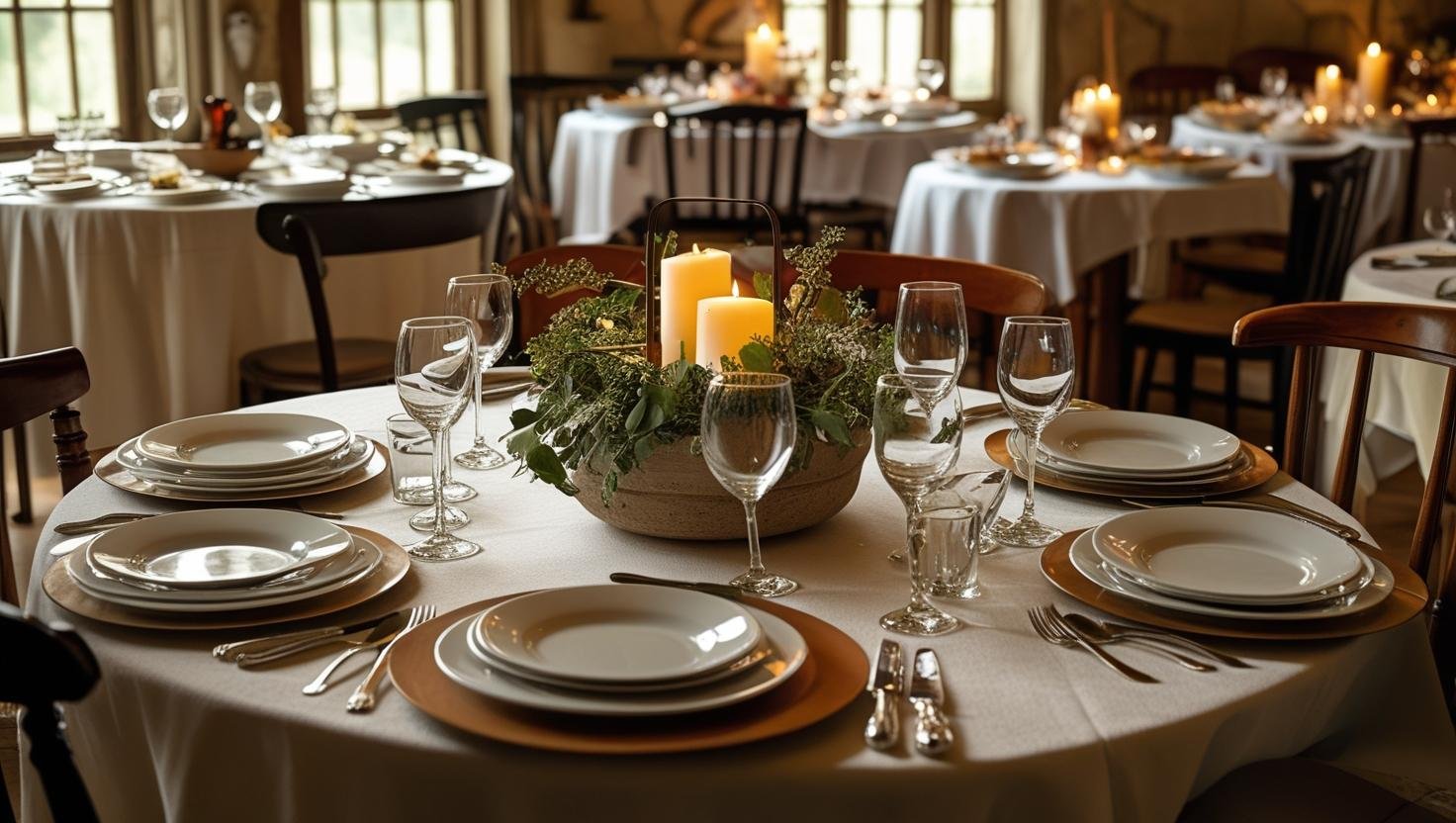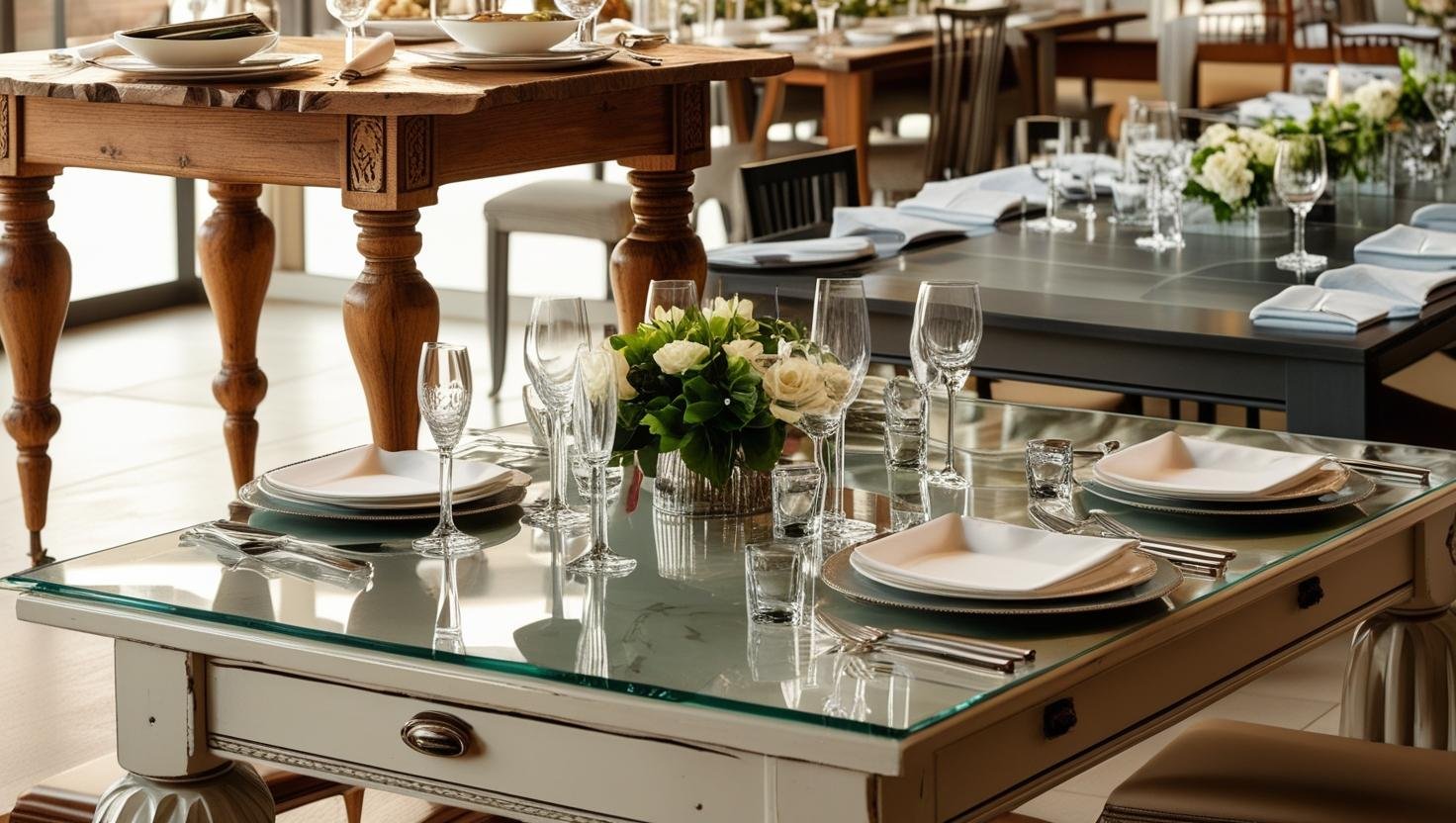
The dining room tables usually dominates the main living area of home. It both influences the functionality of your dining area and the aesthetic of it. An appropriately selected table serves your lifestyle, suits your room and goes together with your decor. As it is a long-term investment, the appropriate dining room tables must serve you within years and be able to satisfy changing needs and trends.
A Social Centre of Every Day Life
The dining room tables is more than a place where people came to eat, it is where the life takes place. It is the place where families reunite at the end of a busy day, children do their studies and friends have an emotional talk. In most households, the dining room tables serves both as an office or a studio. Since it is the center of all activities in daily life, the right table has to be comfortable, useful and appropriate to your routine.
Refection of Your Style
Your dining room chairs also form a big part of design. It establishes the mood in the room and tends to determine other ornamental items such as floor lights, seats, carpets and wall accessories. Your style can be modern and minimalistic or rustic and comfortable, in any case, the table must match your taste and the other space in which the table is situated. The wrongly sized table or one that looks odd can ruin the harmony of the whole room, and a properly selected table can help to improve the overall picture as well.
Convenience Availability with Flexibility
Much of the current housing focuses on having multi-mechanism spaces, particularly the open living design. The tables in the dinning room should be flexible. As an example, you will find people with extendable tables, as they like to entertain but do not need a huge table sitting around in between the visits. Drop-leaf or folding tables could be good, but they are ideal in smaller apartments where space is rather limited. The selection of a table that will suit both your space and lifestyle will enhance your desired comfort and effectiveness at home.
Key Factors to Consider When Choosing a Dining Table

1. Size and Space
- Check the size of your dining place before making a purchase.
- There should be a spacious surrounding each table to accommodate movements easily, a distance of at least 36 inches between the walls/ furniture and the edge of a table can be allowed.
- Think of the number of persons who will have to sit down and whether you need additional space to accommodate guests.
2. Table Shape
- Rectangular: It is most popular, and it adjusts long or narrow room.
- Round: Enhances more talk, best suited to square rooms or a small one.
- Square: This is ideal in scenarios where one is having a small and cozy food/eating encounters and well balanced room plans.
- Oval: Gives the same seating capacity as rectangular tables but softer looking.
3. Material and Durability
Solid wood (such as oak, walnut or teak): Durable, traditional style.
- Engineered wood: It is cheaper, but with a well-built one, it can still last a long time.
- Glass: Sleek and contemporary: Glass is suitable in minimalist or small spaces.
- Metal: Sturdy and Industrial; it is commonly combined with wood or stone.
- Stone: Luxury and solid but needs maintenance.
Top Dining Room Tables Trends in 2025

Dining room tables in 2025 are not all about fashion they are also all about keeping up with new ways of living, environmental causes and demands. The main trends of this year give an idea of an increased popularity of a quality rather than quantity, natural materials, and designs that are beautiful and convenient in daily use.
– Sustainability Matters
And sustainability is not a niche anymore, it is a priority of many home building owners. Customers are demanding products with furniture made of green materials as more people realize the effects of climate change. It implies tables made of FSC wood, reused timber, bamboo, and reused metals or any other plastic.
The manufacturers are also turning to non-toxic finishes, water-based stains and natural oils that minimize the amount of chemicals used in the house. In addition to the materials, the buyer choices are also being directed by sustainable practices in manufacturing like use of less energy, ethical labor practices and low packaging.
A sustainability built dining room tables is not a matter of choice but a matter of values. It is the history of conscious existence and ecological accountability that present-day house owners are glad to represent.
– Compact and Expandable Designs
In crowded cities, apartments have to become more compact thus creating a trend of multi-purposes rooms, convertible and compact dining tables begin gaining a particular popularity in 2025. Such economical products enable you to live large on small space.
Tables with drop-leaf extensions, fold-away alternatives and those with concealed extension leaves complement studio apartments, common areas or open floor designed houses. Even the most recent designs feature inbuilt storage or two-in-one functionalities such as dining tables that can also be used as desks and are the best fit as work-at-home tables.
Customers appreciate how they can quickly transform the dining area to a holiday dinner with the extended family without losing space the rest of the year.
– Rounded Edges and Organic Shapes
Crisp edges and angular forms are giving room to smoother, voluminous forms. Rounded edged, soft curved and oval or organic shaped tops dining room tables are very sought after. These designs produce a friendlier atmosphere and promote a free flow in the room.
Curved pedestal bases or wave-like edges are some of the ways in which nature in the form of bent elements is being used by designers in giving the interiors a soft and flowing effect. The shapes are also safer particularly in home with small children or elderly family members and help to reduce risk to bump and injuries.
Choosing the Right Dining Room Tables for Your Lifestyle

A dining room tables is not intended only to be beautiful, it must also be simply part of they way you lead your life. Whether you choose to decorate a small apartment, make your place family-friendly, regularly arrange parties or form a magazine-like interior your way of living should lead to the selection.
– For Small Spaces
In the case of limited space available, your dining room tables must be smarter, not laborious. Round tables work best in small space-they circulate around the table more easily and promote chatting. Pedestal bases instead of the conventional four-legged base, liberate much sought legroom and encourage various positions of sitting.
Think extending tables or drop-leaf tables, which can be extended when required. This enables you to expand whenever you have guests but making things small when you are going about your day to day activities. Moreover, light colored tops or glass table will help in airing out small rooms by reflecting the light and making the room less heavy.
Micro-living Wall-mounted or fold-out dining room tables are becoming popular in micro-living environment, particularly studio apartments or combined living/dining spaces.
– For Families with Kids
The need of families with young children or teenagers demands the use of the dining tables, which can endure in case of everyday wear and tear. Strength and easy maintenance is a necessity. Durability especially oak, maple or rubber wood tables are sturdy and can be easily refinished in case of marks or stains on the table after it has been used.
To prevent bumps and bruises seek out rounded corners, and glass or high-gloss which can be prone to fingerprints or high gloss can break. The wipeable surface as well as water resistance is worth its while when it comes to meal time and arts and crafts projects.
It is also good to select the tables that rest on a robust base and there is strong joinery so that they can be steady as there are active little ones on the move.
– For Entertainers
Are you a dinner events fan, holiday tables, and fun games with your family or friends? In that case, you want a comfortable table with an extended number of seats and opportunities. Rectangular tables usually provide the greatest amount of space in terms of surface area, and in terms of seating capacity, when accompanied by a bench seat or a stackable chair.
Readily available are tables that have an extension leaf, either drop-in, butterfly or self-storing mechanisms to instantly increase your seating up to 40 per cent or more depending upon your table size without having an entirely additional piece of furniture. The material must be fashionable and long-lasting choose hard top wooden with protective lacquer or scratch finish.
Other entertainers would also want their tables to have additional convenience such as lazysusan, built- in wine holders and matching sideboards among others.
– For Design-Forward Homes
To the person who also perceives furniture to be a part of personality, the dining room tables is a space to be creative. Choose sculptural bases, non symmetrical shapes or unusual material combinations such as wood and resin, marble and brass, metal and glass.
The statement tables made of bright colors or unusual silhouette may serve as the ice arrow and take the whole concept of the dining room tables to the next level. Find hand-crafted design, artisan finishing or unique textures that bring depth and character.
By 2025, maximalism and minimalism live in some intriguing harmony, regardless of whether you are outfitting a clean-line modern aesthetic or stacking patterns and materials to create an optical impact, select a table that complements your design vocabulary.
Dining Table Care and Maintenance Tips
To ensure longevity:
- Protect surfaces with the use of placemats, coasters and tablecloths.
- Also as soon as spills occur on wood and stone, then clean them.
- Furniture care Periodically apply furniture wax or oil (in the case of wood), to retain a shine and avoid drying.
- These products are sensitive to direct sunlight and high humidity which might deform or fade.
FAQs
1. What would be the most lasting dining room tables in 2025?
Hard woods such as oak, walnut and teak are the lasting option.
2. What are the steps I can use to select the size of dining room tables in my area?
Measure the room and find space of at least 36 inches all around the table.
3. Are dining room tables the extendable ones a good buy?
Yes! They are also flexible and do not take much space.
4. What are the shapes in the 2025 trend?
Circular and oval designs are becoming popular with their gentler more space saving appearance.
5. Is it possible to combine and create-dining chairs with my table?
Absolutely. Blending chairs of different styles can but personality in a room, but colors or materials should be consistent.
Conclusion
The finest of dining room tables you will find in your home in 2025 should be the right one that balances on features like elegance, functionality, and durability and one that matches your living style. Shape, size, materials, and contemporary trends should be taken into consideration in order to be sure of the investment that will raise your daily and special events meal to the new level.
Spend some time to evaluate your needs, your place, your style. Wisely selected dining room tables can make part of your home that you would appreciate over the years. Sure, a table should be used to create both casual (a cozy breakfast nook) or formal (a formal dining area) setting, but a well-fitting one will establish the mood of connection, comfort, and creativity. More than a furniture, it is the place where a life takes place.
Read More: Space-Saving Tips: 10 Modern Small Living Room Ideas for 2025